Nissan’s ‘Pike Cars’ were a quartet of dinky little wonders built in limited numbers that proved immensely popular. The Figaro was the last of them, the peak of Japanese eccentricity.
Cars can make you grin for any number of reasons. It might be the styling, it might be the way they go, or even the sound.
And some just make you chuckle inside every time you see one, like the Nissan Figaro. A real-life Noddy car, the Figaro might not be universally admired but it always gets people smiling, sometimes in disbelief; you can never accuse it of being ordinary.
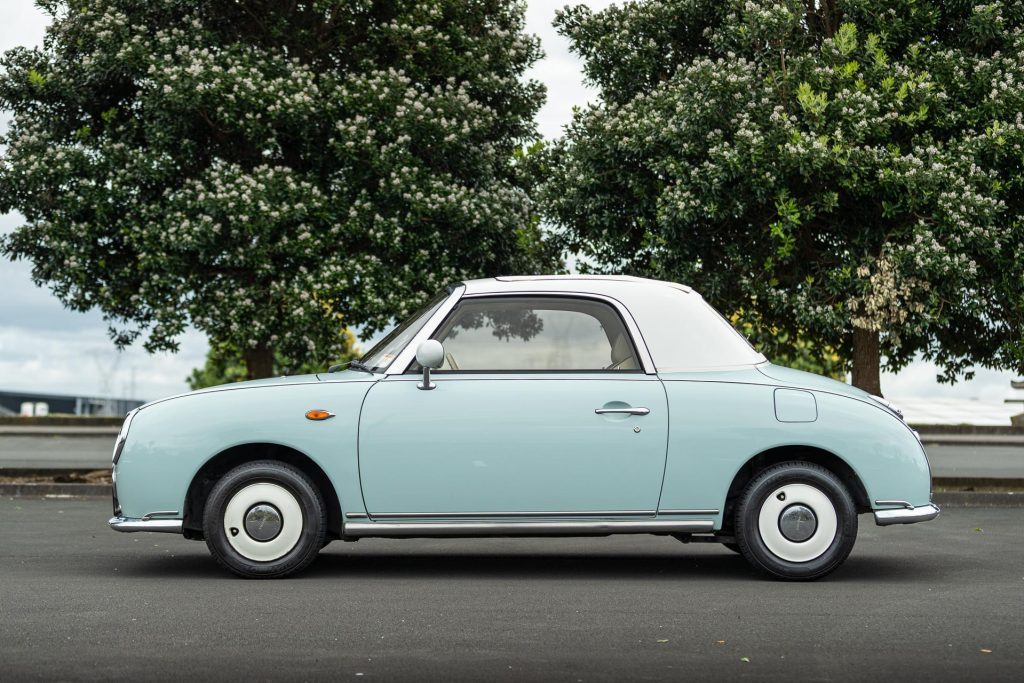
Figaro was the last of the Pike Cars, a series of dinky designer specials that kicked off with the Be-1. The story goes that Nissan was looking to counter the Honda City with a new car called the March.
One of the original design concepts was the B-1, penned by Naoki Sakai, who drew inspiration from clothing and fashion.
From an interview from the Figaro owners site, Sakai san said; “our original [March] proposal, called the B-1, was regarded as not really appropriate for the ‘ordinary car market’. Then, a better-than-expected reaction at the Tokyo Motor Show pushed the project to sell 10,000 cars. Sales of Be-1 were very successful and created publicity worth as much as 30 billion yen for the Nissan brand revival.”
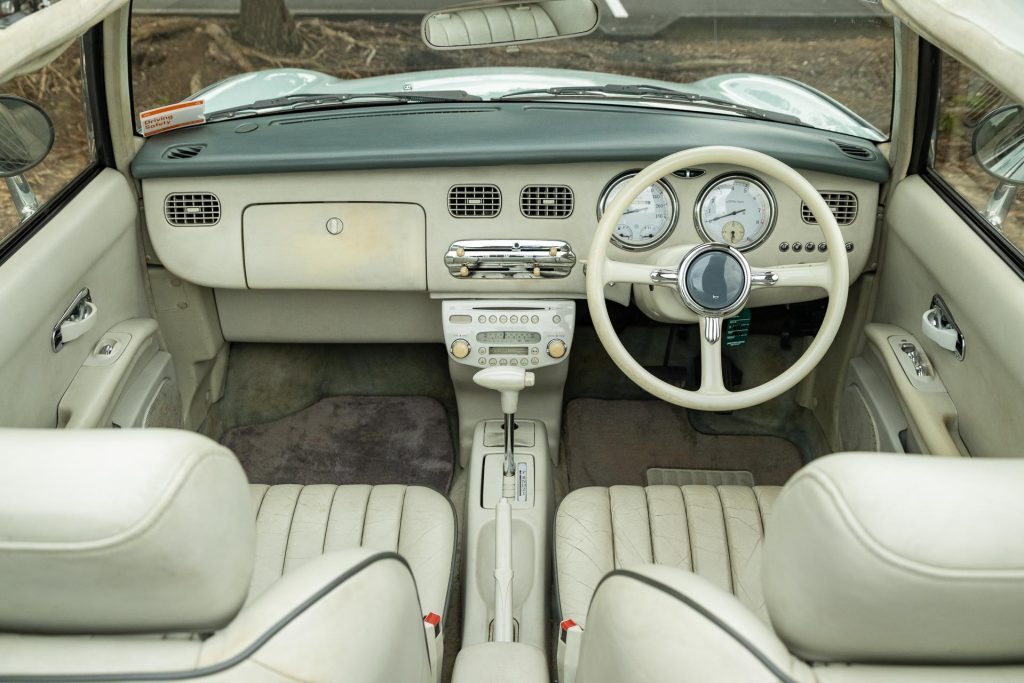
Before we go any further, what’s a Pike Car? Nissan says a “Pike car is a generic name of playful yet edgy cars manufactured on the condition of limited volume production.”
It’s thought that Pike relates to a spear, a metaphorical thrust to design something edgy. The manufacture of the cars was outsourced to Aichi Machine Industry, which Nissan would later call the “Pike Factory”.
Following the Be-1 came the PAO and then the S-Cargo, the latter well known here for many turned up in the mid-90s as used imports. And so did a few of the Figaros.
Said to be a “two-door coupe just for yourself”, a concept was first shown at the 1989 Tokyo Motor Show, the design idea being “Tokyo Nouvelle Vague”. Yeah, we’ve no idea either.
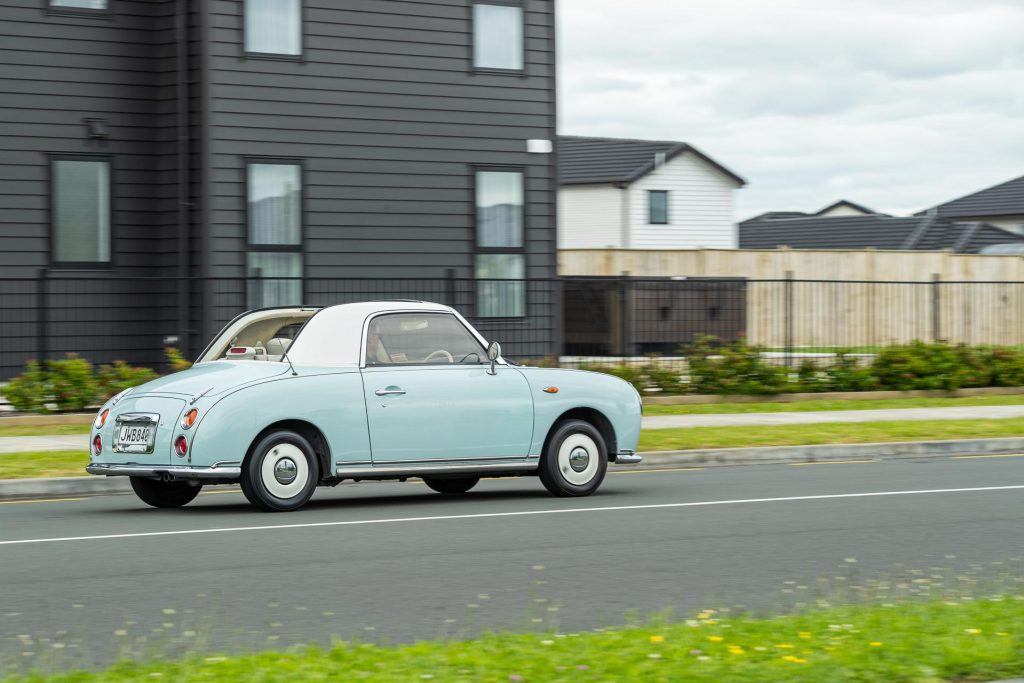
On Valentine’s Day in 1991, Nissan announced it would begin limited domestic sales of the Figaro, and that the production version would reproduce the styling of the concept ‘as faithfully as possible’.
From the original press release, Nissan said “the Figaro was developed around the concept of creating a distinctive, personalised coupe that would allow owners to enjoy a delicate feeling of stylish elegance in everyday life”.
The styling was said to “convey a sense of spiritual satisfaction” while the car was intended to “satisfy a zestful desire for a good time”. You couldn’t make this stuff up.

While the body shape is distinctive with its ‘large curved surfaces and natural lines’, it’s the chrome bits that give it special character. It features tiny little bumpers, while the side sills and many other parts, like the grille and headlight surrounds are also chrome plated.
Some of the body parts up front, such as the guards and apron, were made of plastic flex panels, that added lightness but Nissan said they were ‘more resistant to corrosion and could be restored to their original shape following a light impact’.
Rust was the major killer of Pike Cars, most of the S-Cargos slowly rotting away here.
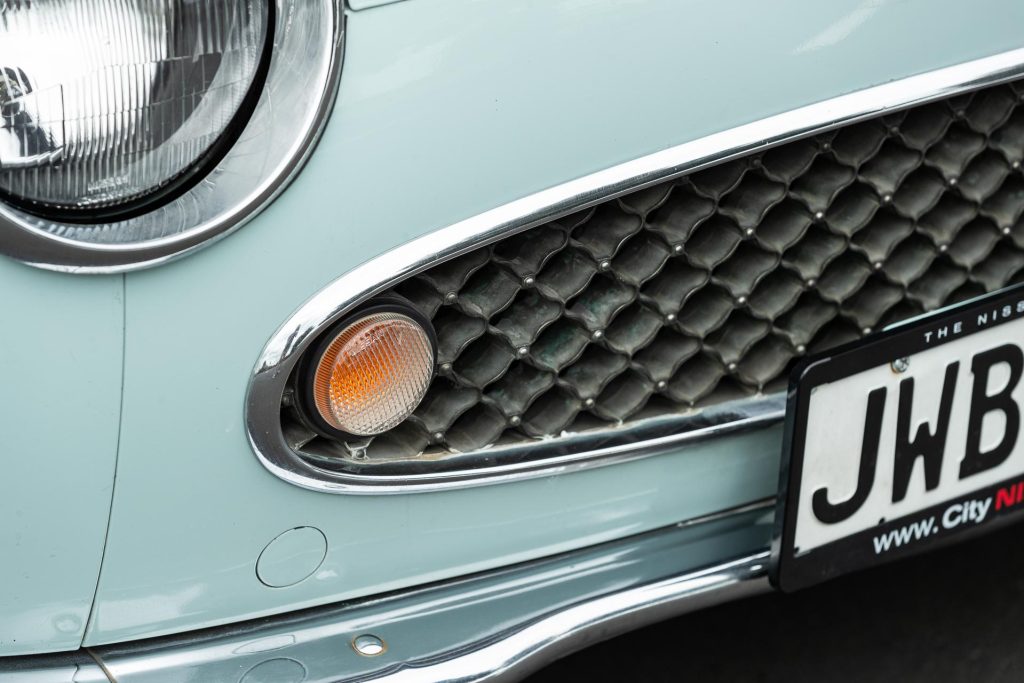
Inside, the car is just as unusual, everything Figaro specific with old fashioned dials and ornate switch gear which ‘convey the impression of being decorative accessories’.
Their gentle curved design mimics the Figaro badge, said to be suggestive of a rosebud. Even the head unit is special, complete with a tapedeck and CD player.
“The interior is rendered with rounded surfaces to match the gentle curves of the exterior, which is intended to give the occupants a feeling of enhanced pleasure and comfort”.
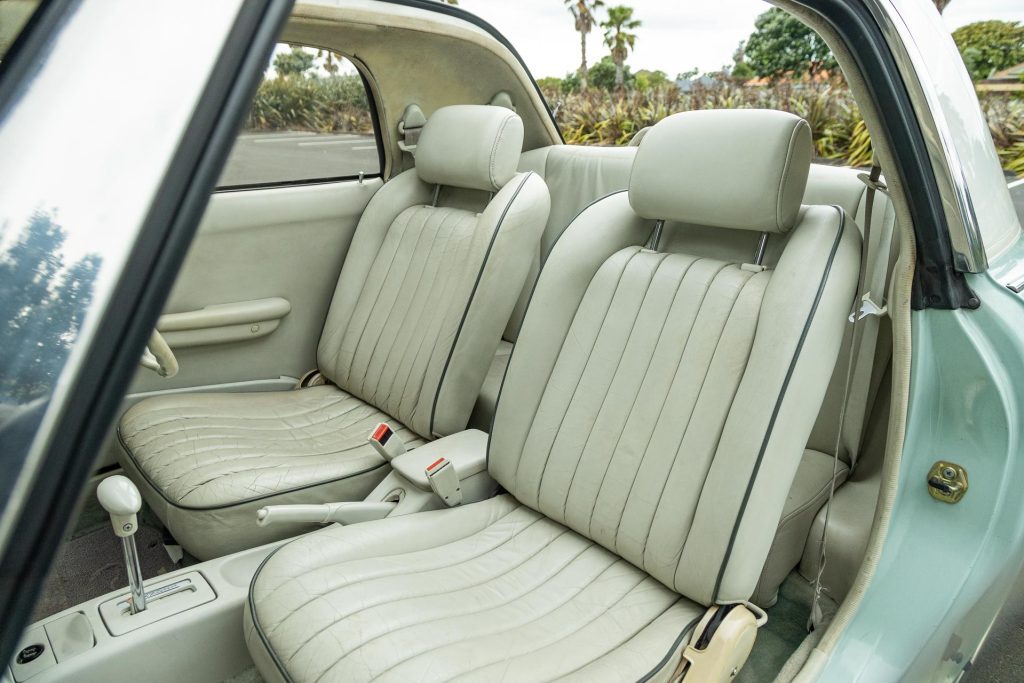
The seats are special too, “covered in authentic white leather giving the appearance and tactile sensation that only natural materials impart”.
A special paint was applied to the plastic dashboard “to enhance the feeling of softness”.
Safety items of the day were; side door beams, three-point seat belts for all occupants, a high mounted stop lamp and flame-resistant interior materials.
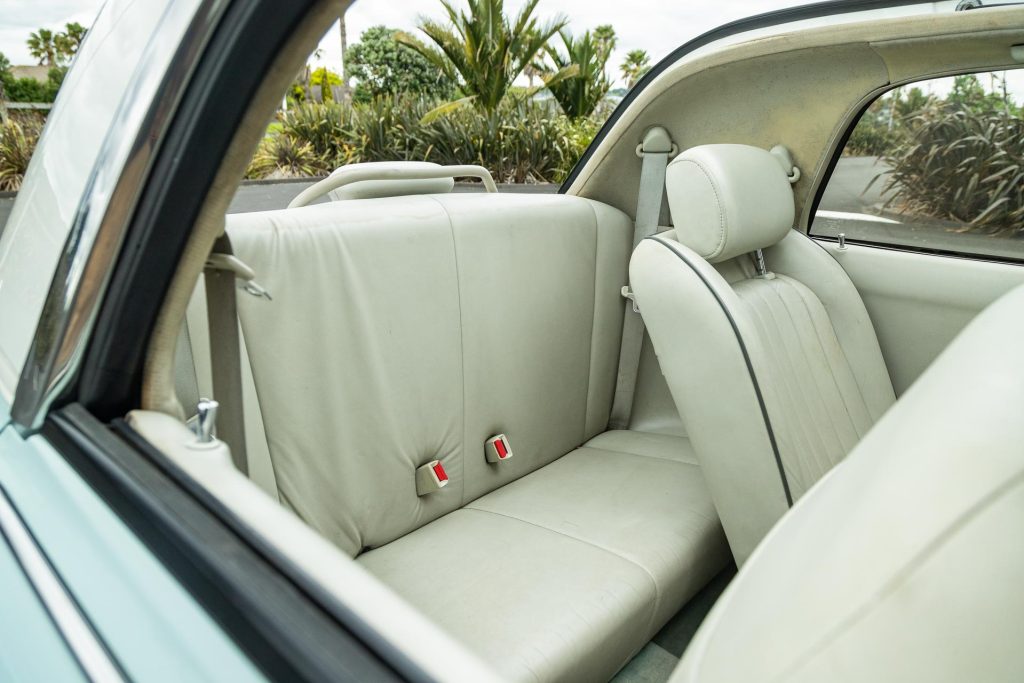
Figaro was 1,870,000 yen when new, and the 20,000 made were sold in three allotments via a ballot system. It was only available in Japan.
It’s toy-car small, just 3.7m long, 1.6m wide and 1.3m tall. Figaro was heavier than the other Pike cars before it, the additional bracing for the roofless design adding pounds and taking weight to 810kg.
And so its MA10, 987cc four-pot was boosted via turbocharging, bringing the totals up to 56kW@6000rpm with 106Nm of torque at 4400rpm. Nissan boasted it delivered “outstanding fuel economy and quietness to ensure pleasant comfortable driving and ease of operation.”
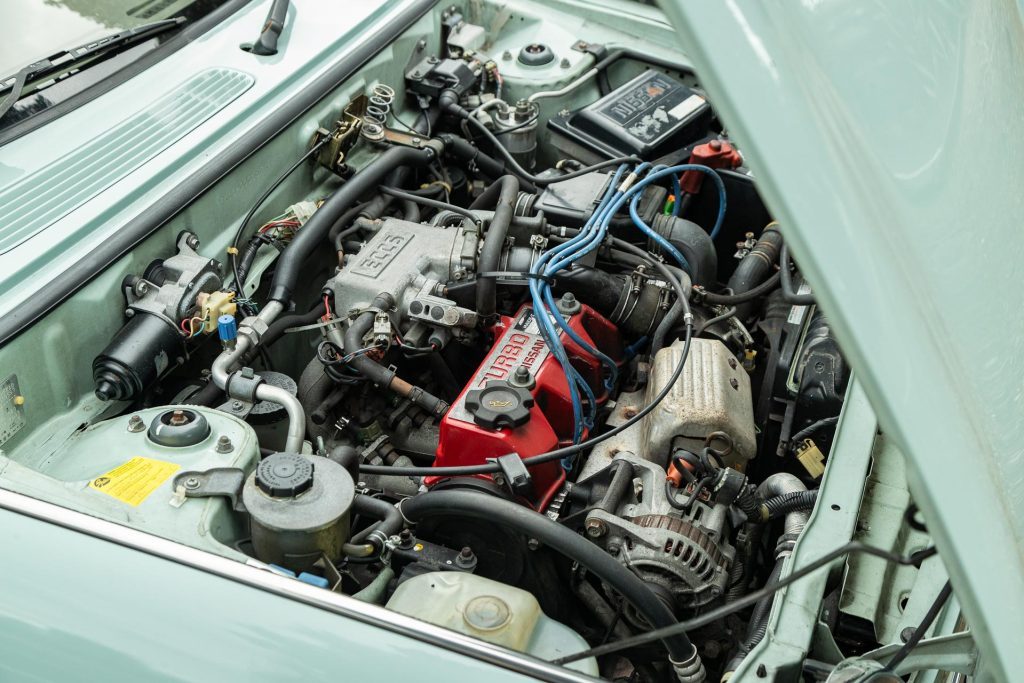
Given the comfortable driving remit, Figaro was only offered with a three-speed automatic. The tiny wheels, with 165/70R12 tyres, add to the toy car persona.
It uses the same underpinnings as the K10 March with front struts and a four-link coil spring rear. It was offered in four colours to match the seasons; Emerald Green for spring, Pale Aqua for summer, Topaz Mist was the autumn hue and Lapis Grey represented winter.
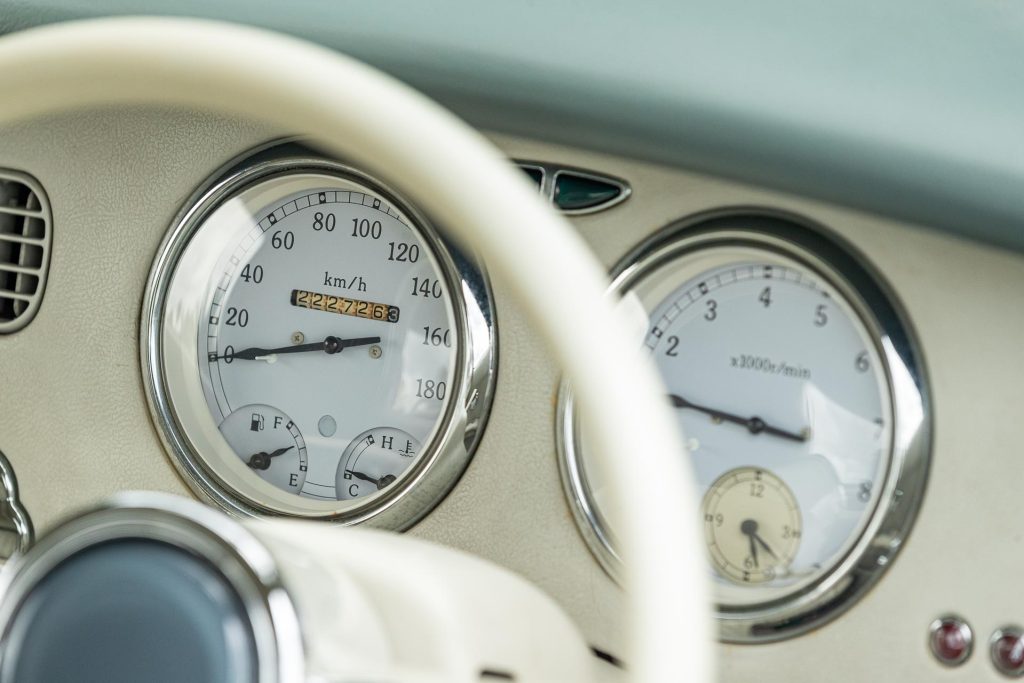
The car still looks unique 32 years later, it really hasn’t aged a day, being a yesteryear design from the outset. This example is well used, having covered 220,000km, highlighting its robust Japanese mechanicals.
Still in original condition, it’s holding up relatively well but in need of some attention. While still popular here, they command more money overseas, particularly in the UK, where firms such as the Figaro Shop offer restoration services.
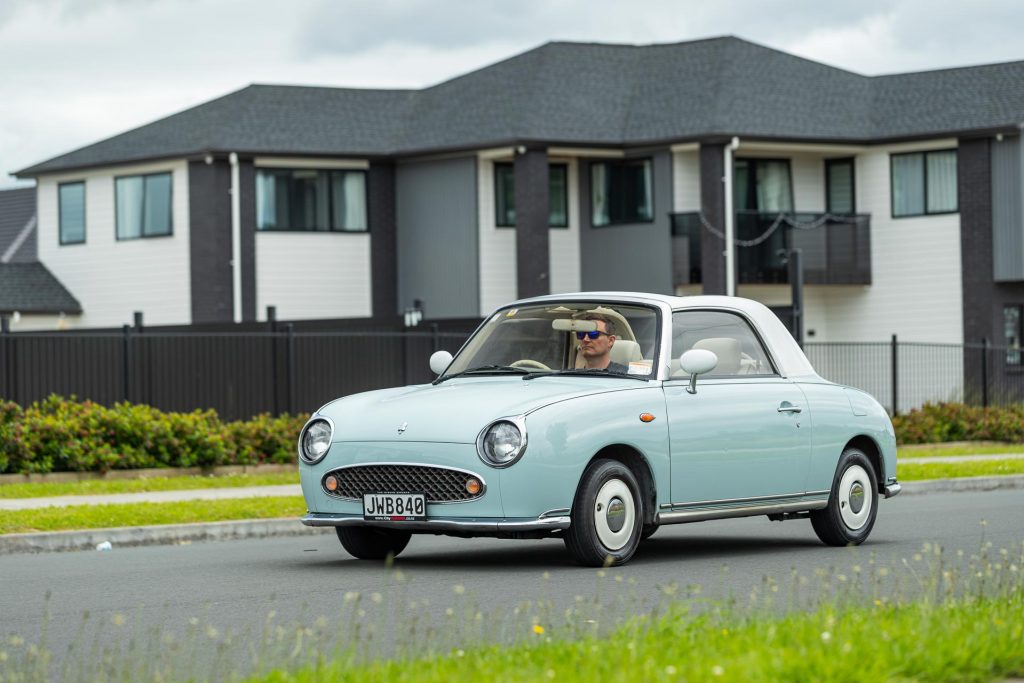
And it has restored examples for sale at around the £25,000 mark. That’s fifty grand for a Figaro.
Despite its age and mileage, this still drives quite well. The litre engine and three-speed auto were never meant to set the world on fire, but thanks to the turbocharging, it has enough torque to get going easily.
It’s all about comfort this, and while there’s a decidedly tinny feel when you shut the doors, the body structure feels quite solid for something that is missing half its roof.
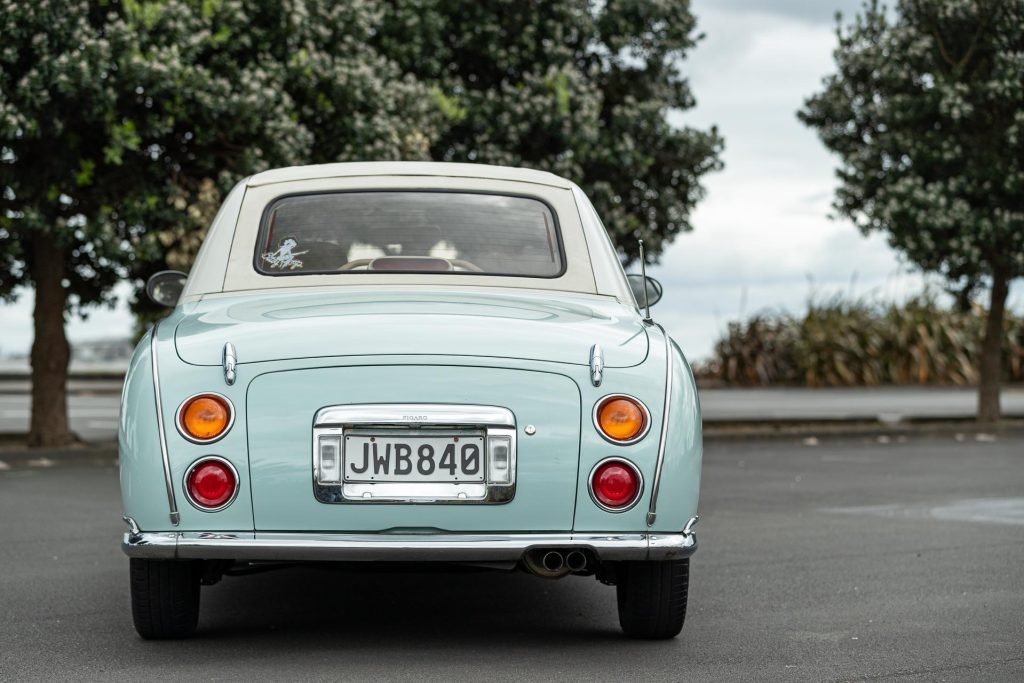
And with the canvas top stowed, the wind noise is rather subdued, yet you still get the feeling of an open air driving experience. The auto is slow to stir, and body roll is never too far away from any corner encountered.
The thin-rimmed wheel feels nostalgic, like you should be helming something from the sixties.
It’s entirely impractical of course. While it does have a back seat, it’s a 2+2 sort of arrangement, while a pair of chihuahuas would be a better fit than a couple of kids in the rear seats.
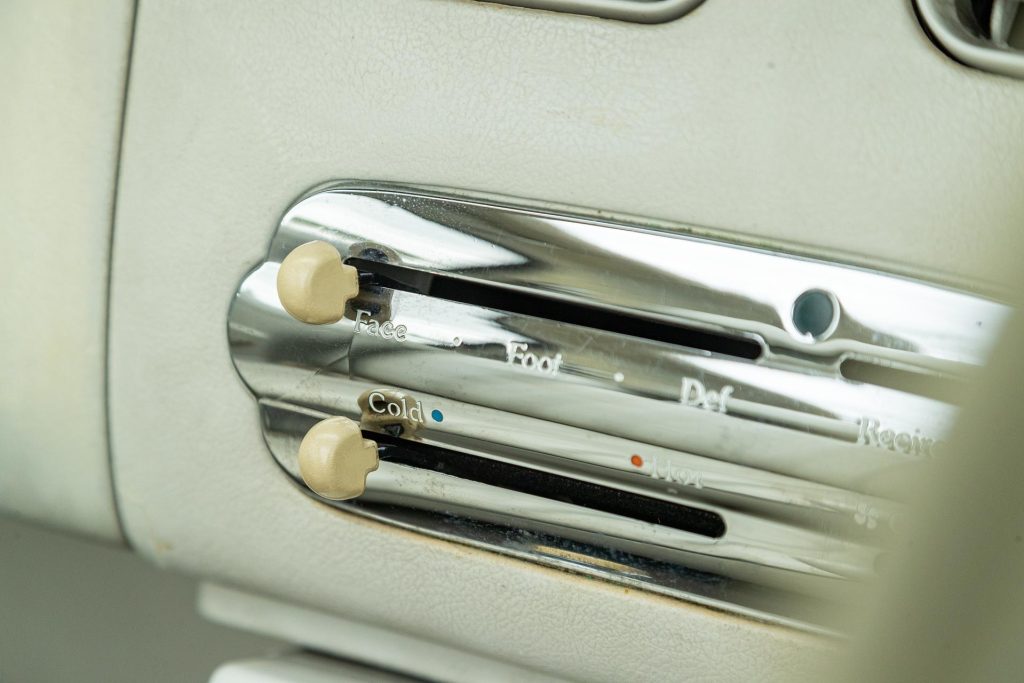
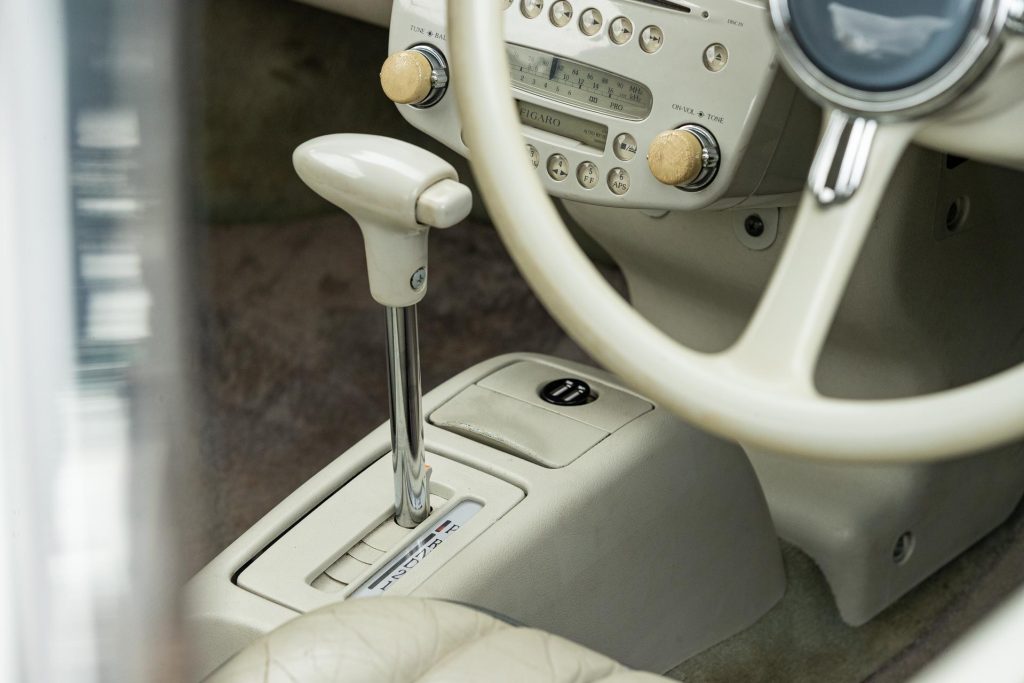
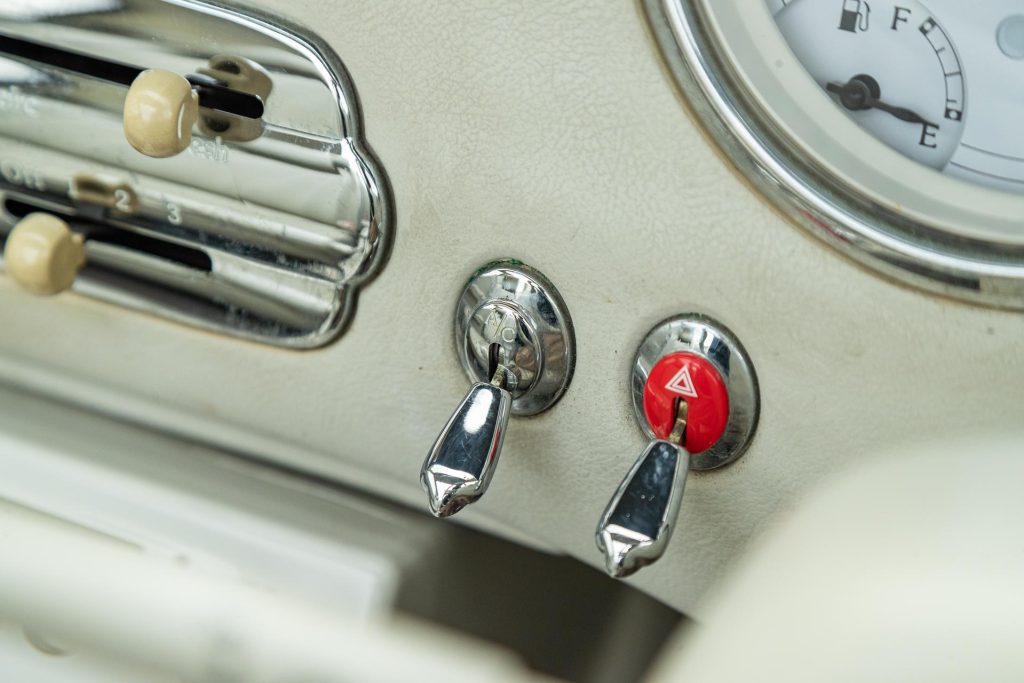
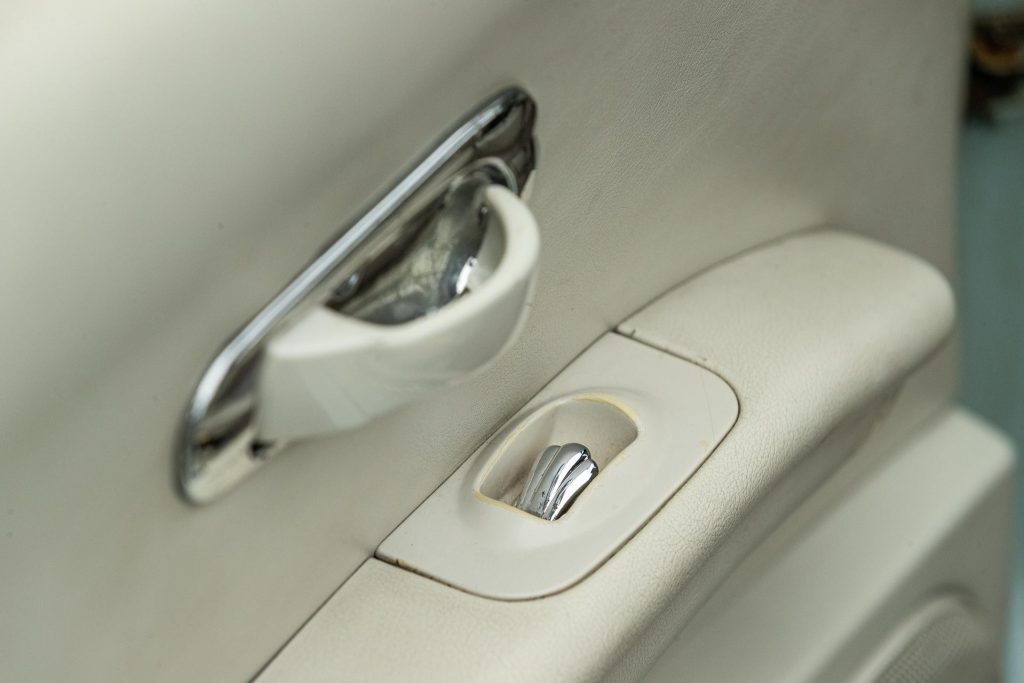
Or the shopping, as there’s precious little boot space, just a tiny little mail slot above the bumper. The roof retracts easily enough, but it’s a manual affair, and one that can’t be done from the driver’s seat either.
Unclip the two latches on the inside of the roof, get out, open the rear deck panel and then prise the roof back. The top then folds Z style into its hiding place, concealed under the body work.
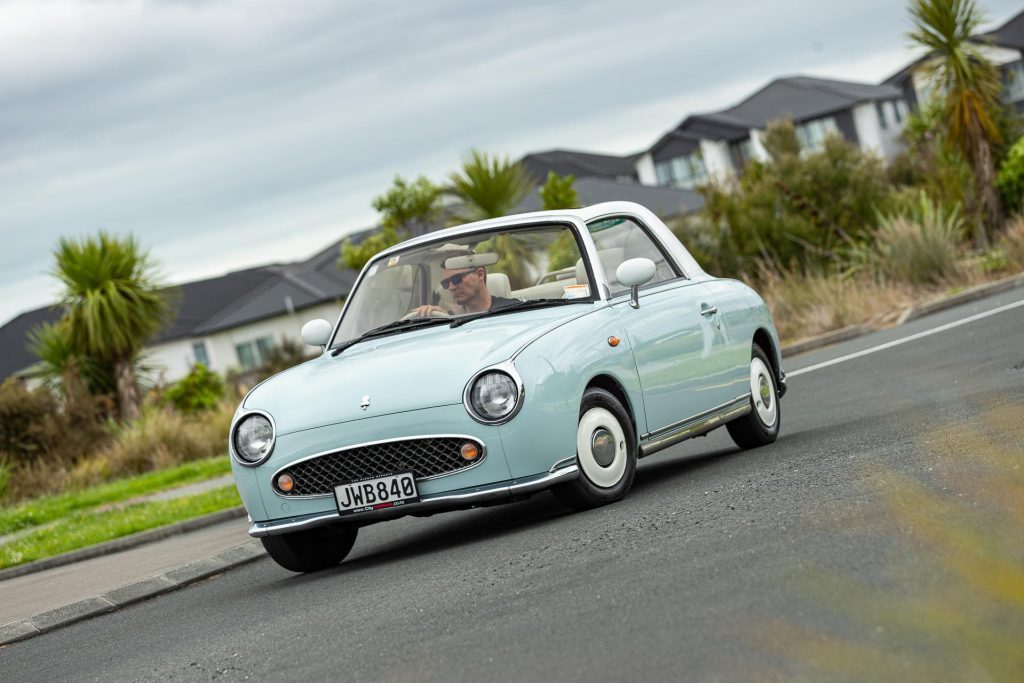
As Nissan put it; “Figaro is built with a sliding soft top that opens wide to allow occupants to enjoy the exhilarating pleasure of open air motoring while travelling in elegant style. Leaving the rear pillars and side roof rails in place, the top folds neatly into the trunk so as not to detract from the distinctive body styling”.
And distinctive the Figaro will always be, a car guaranteed to make you grin.
This article first appeared in the December/January issue of NZ Autocar Magazine.


